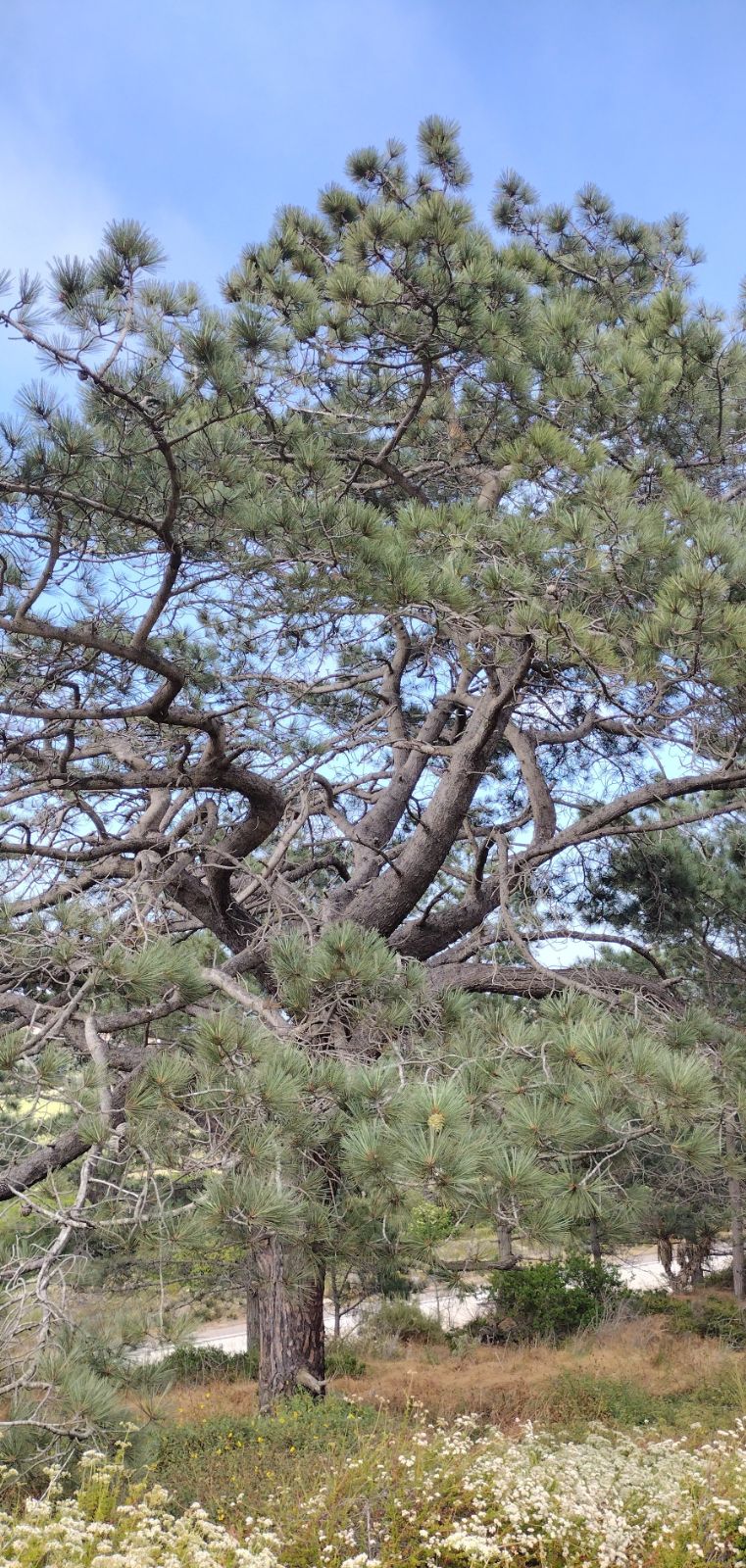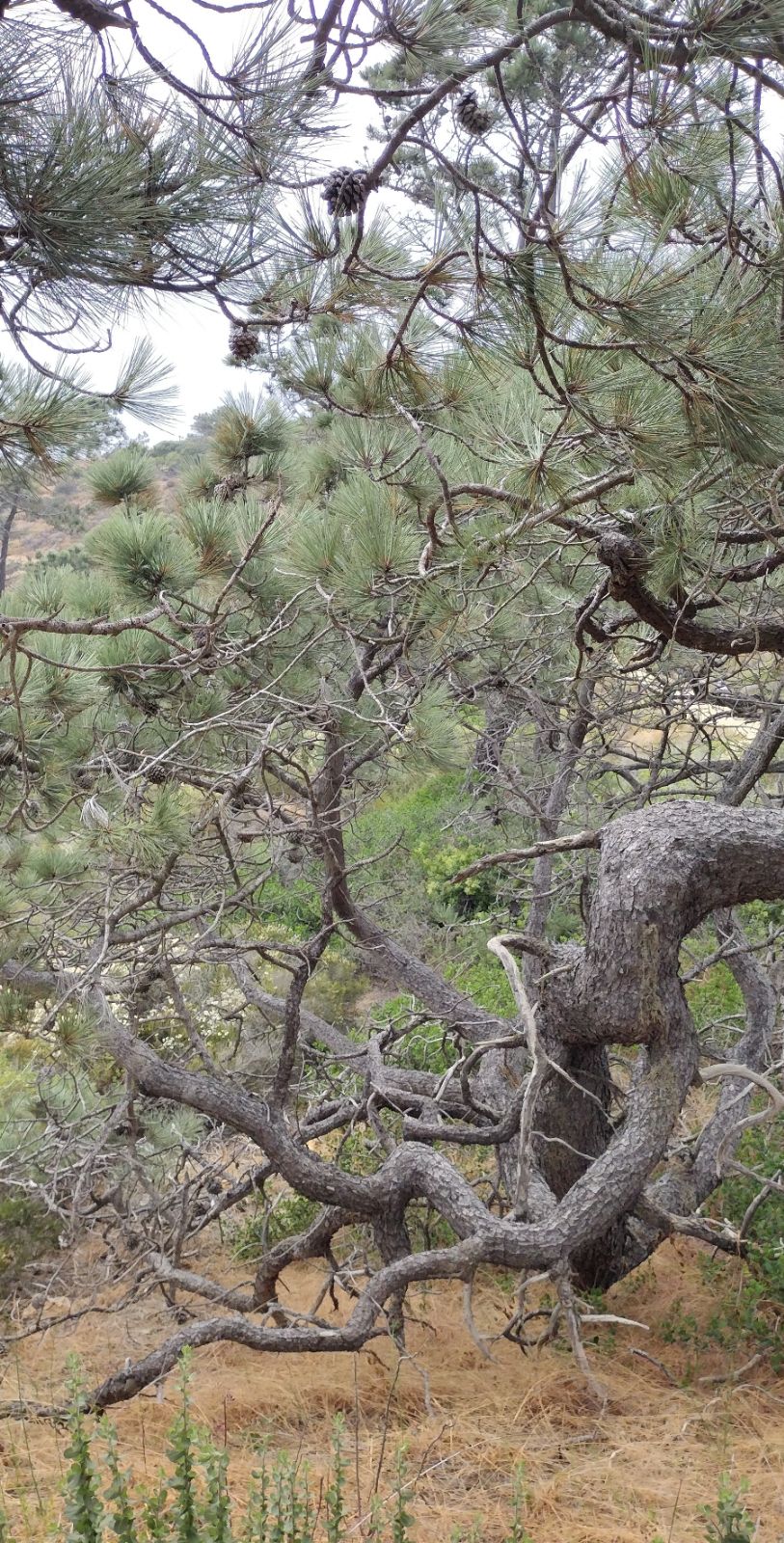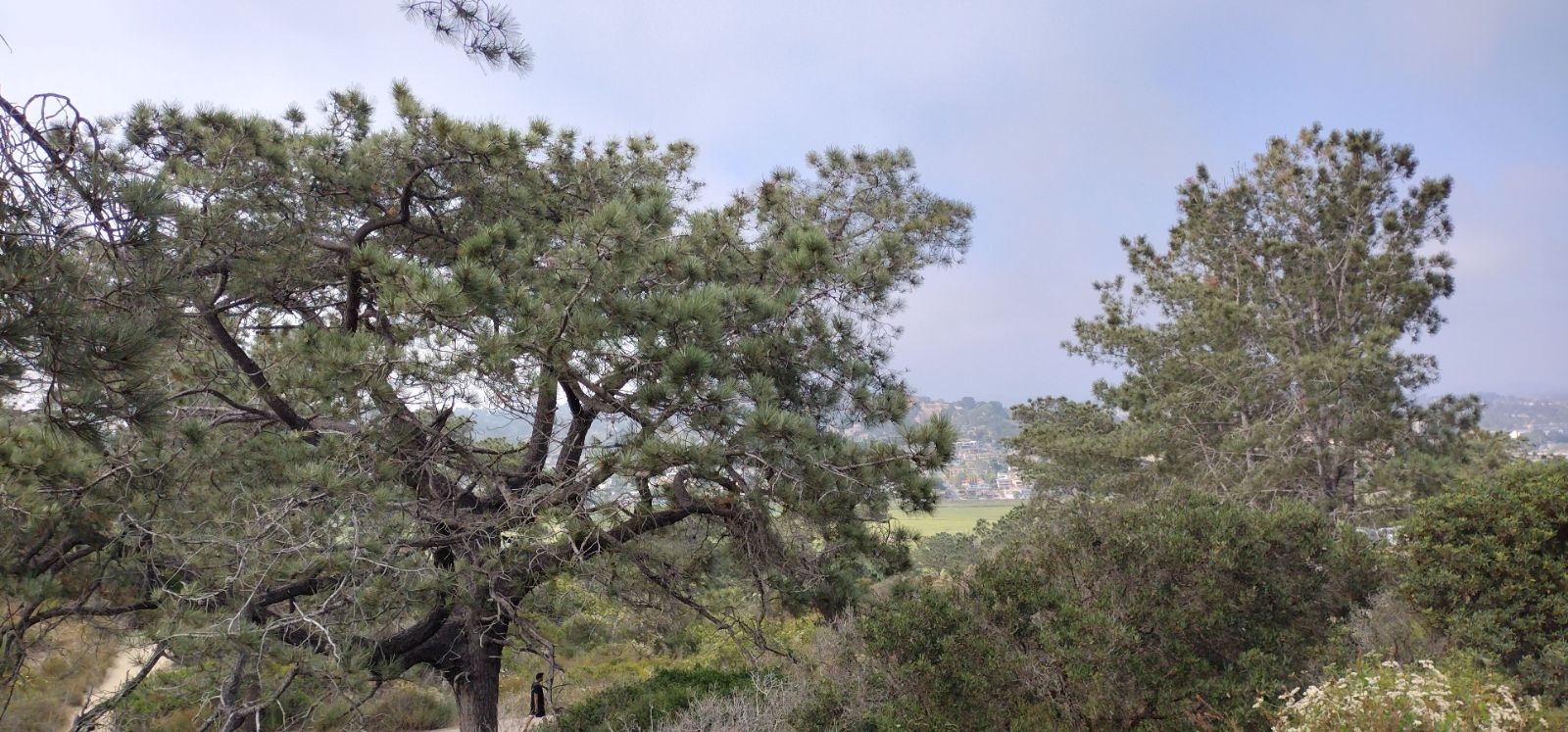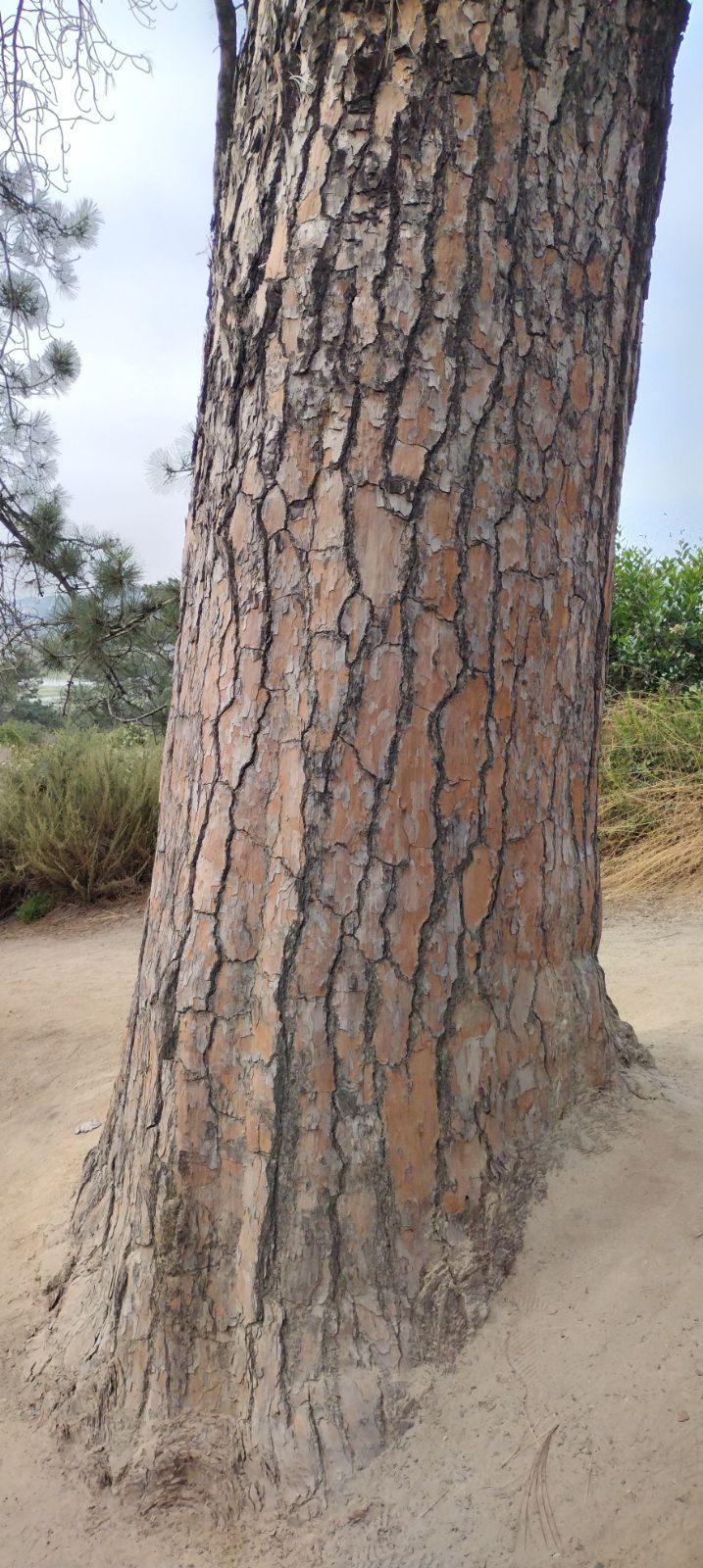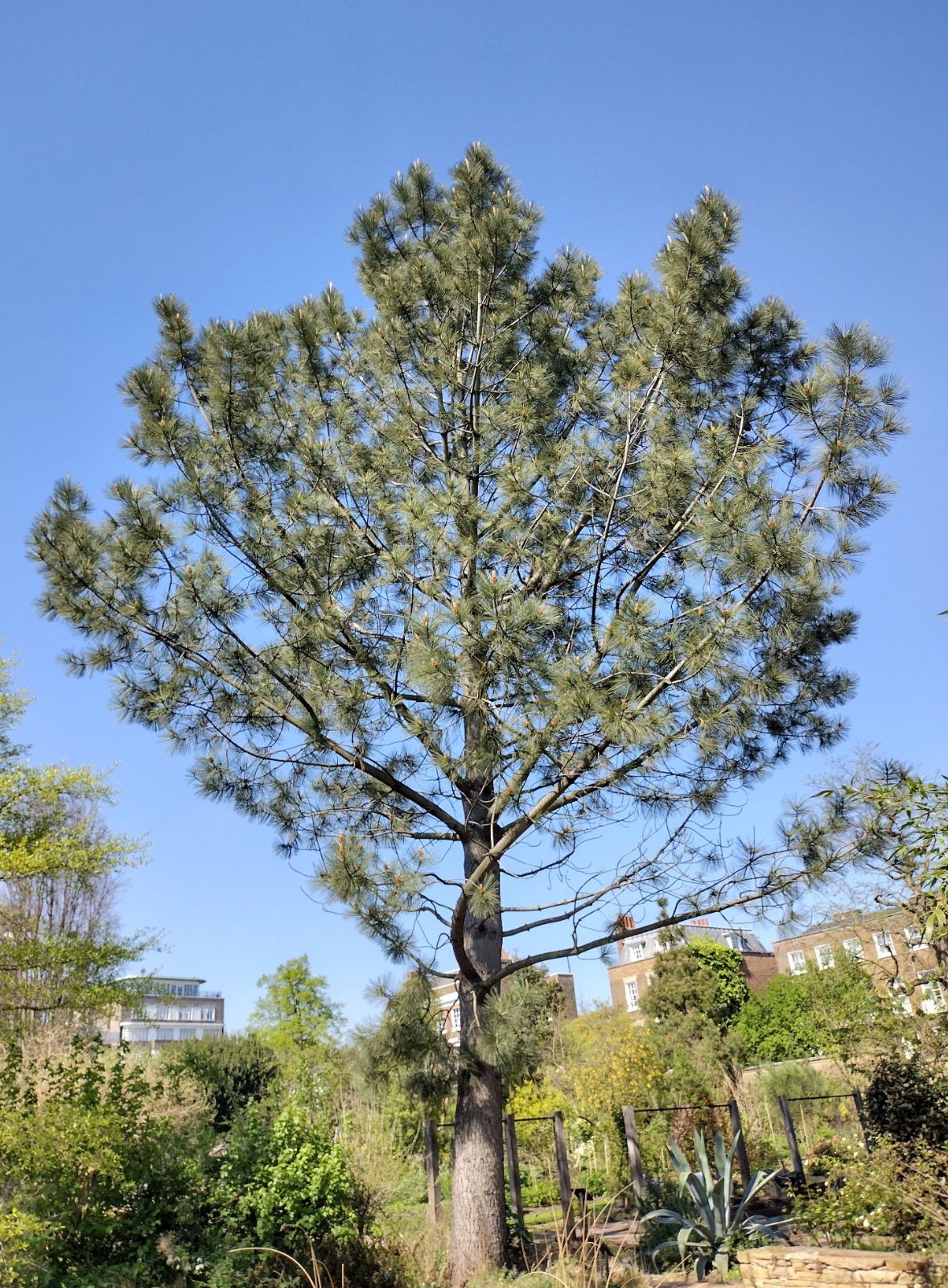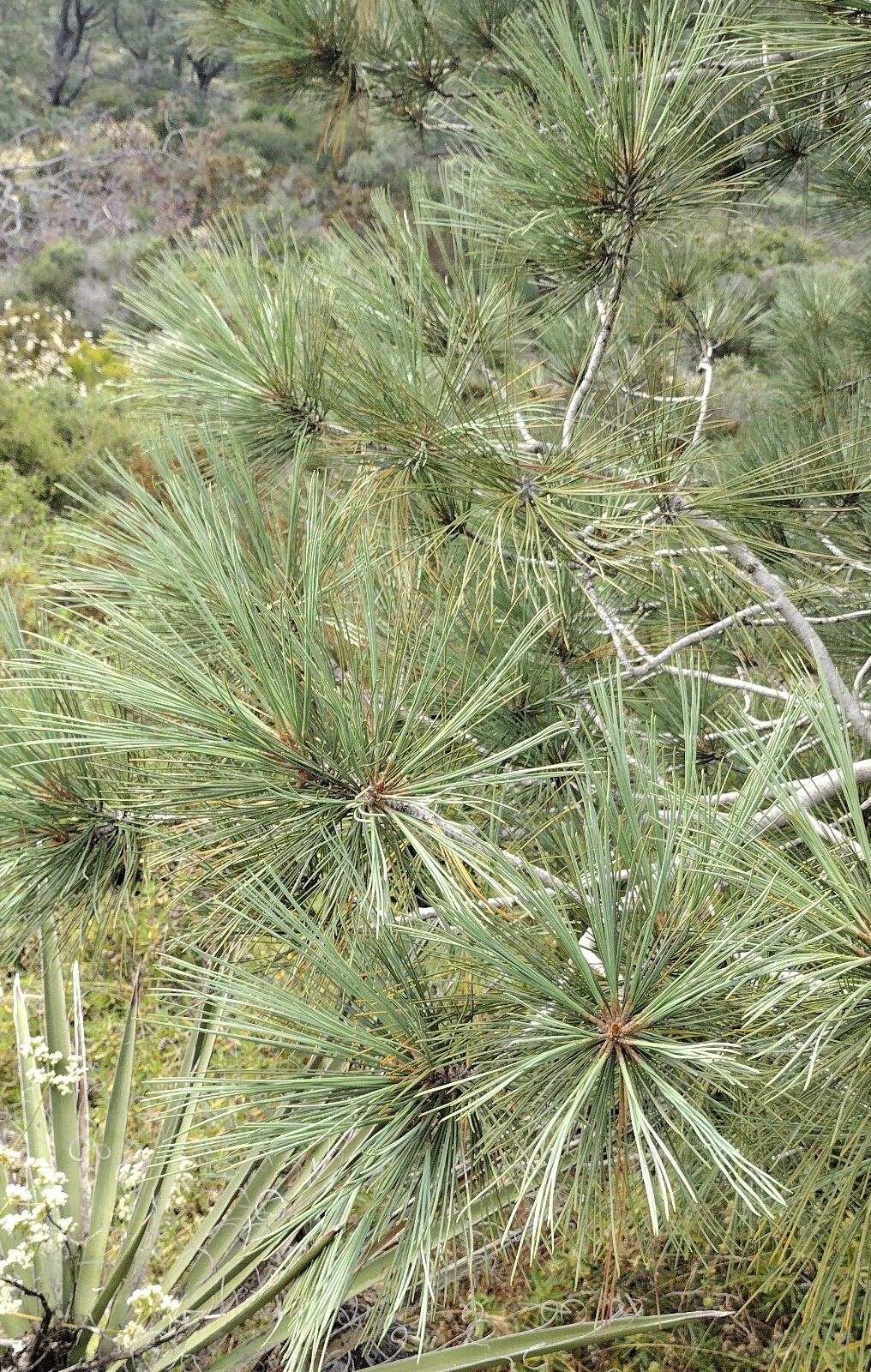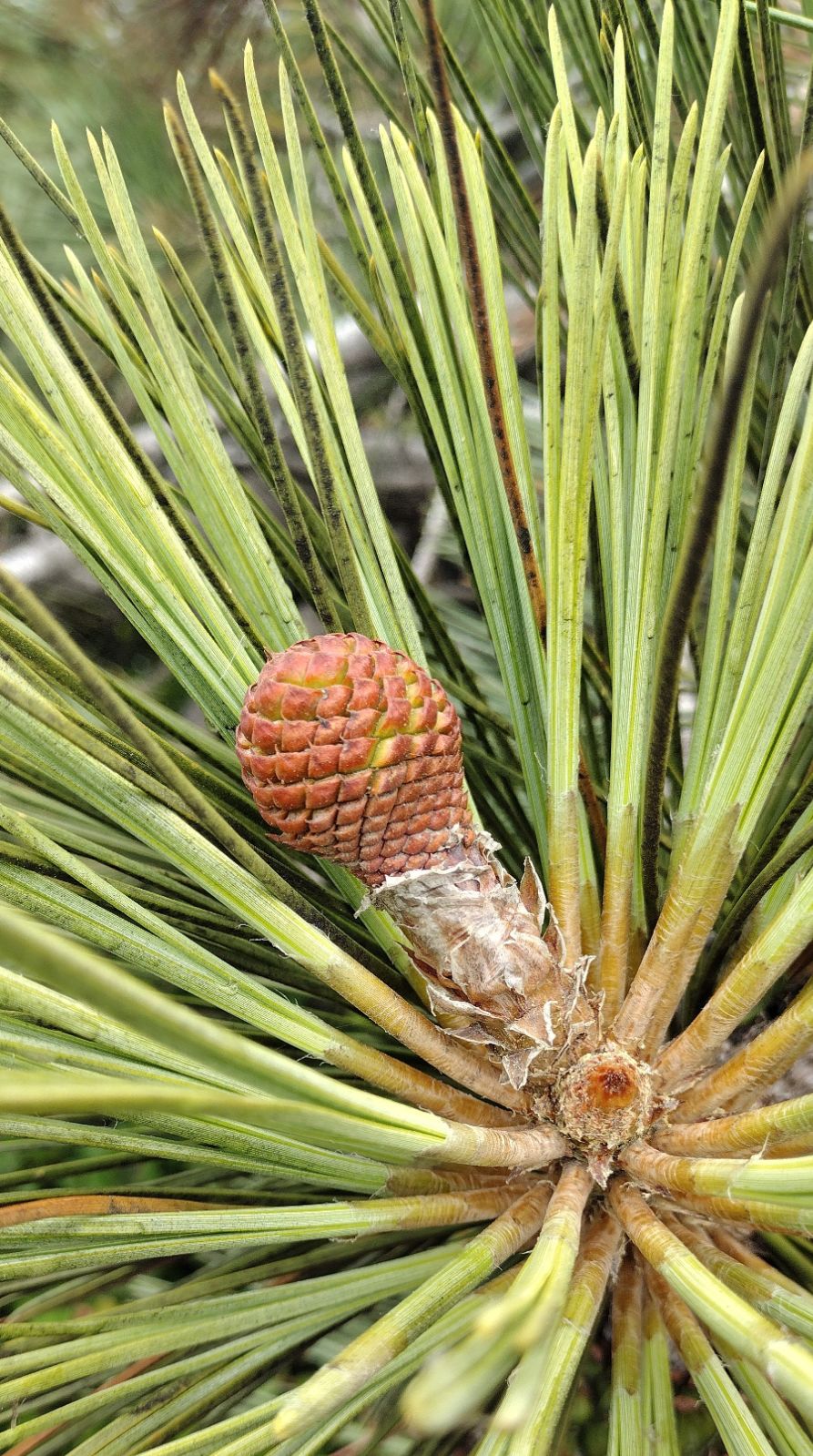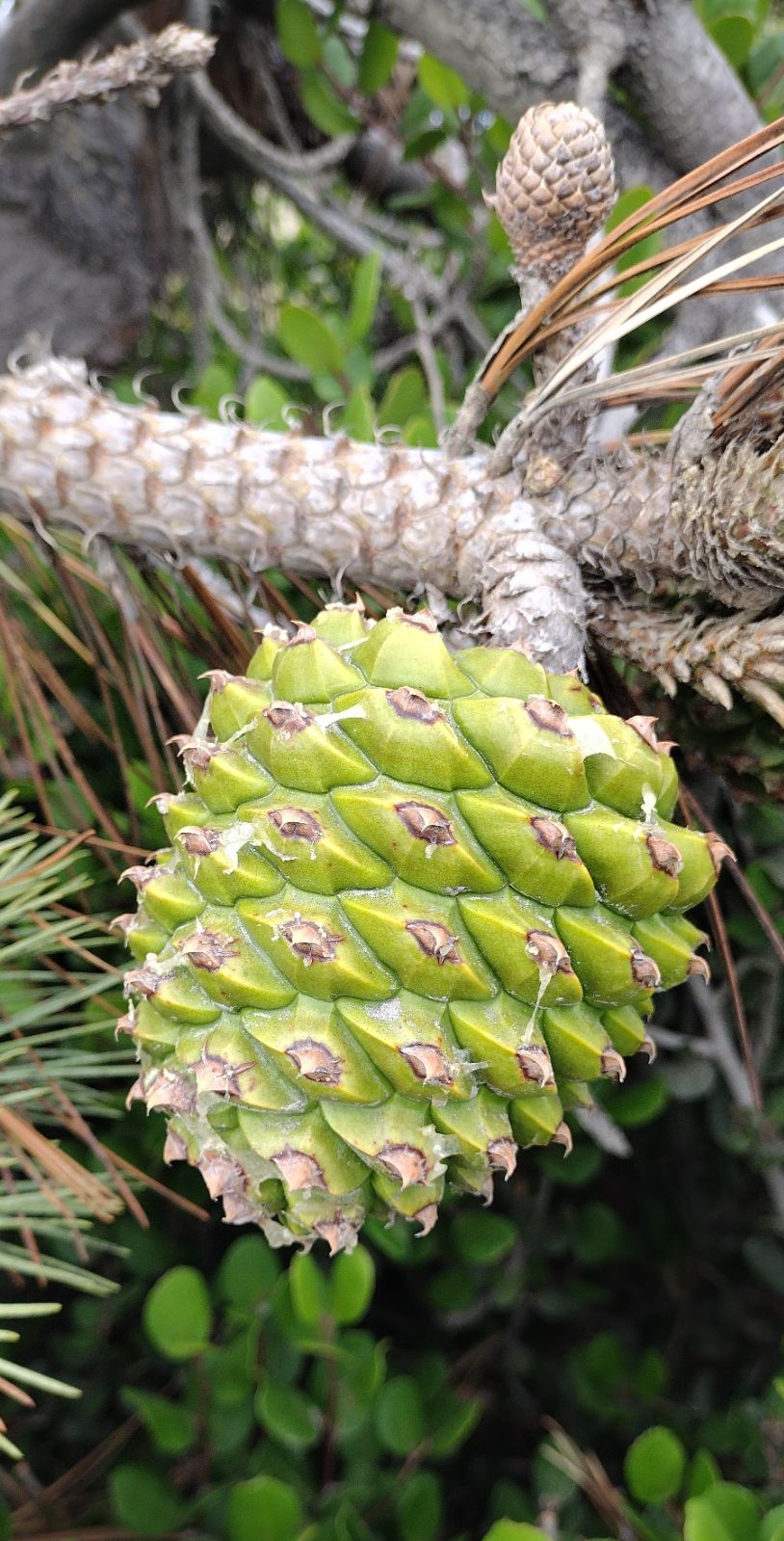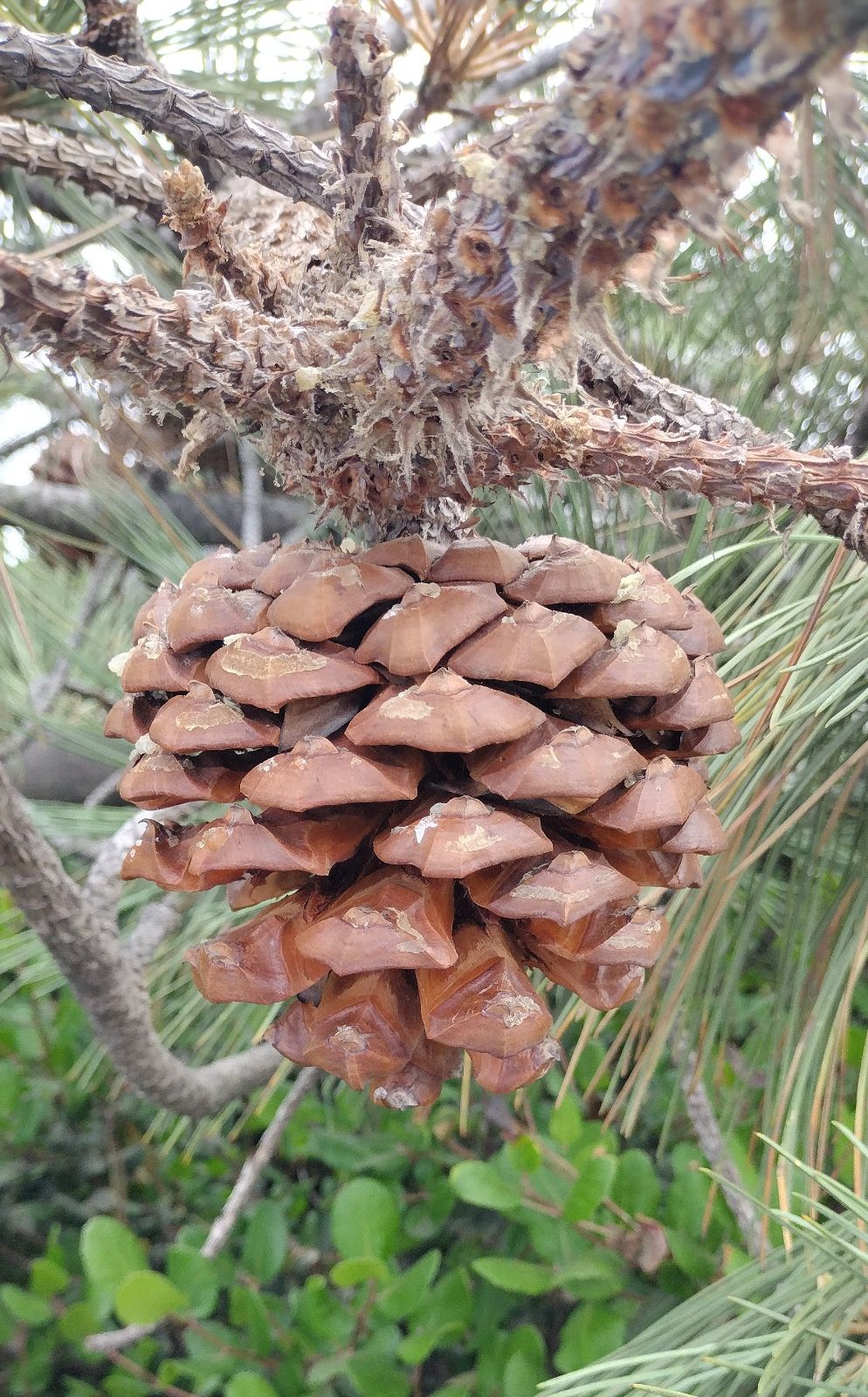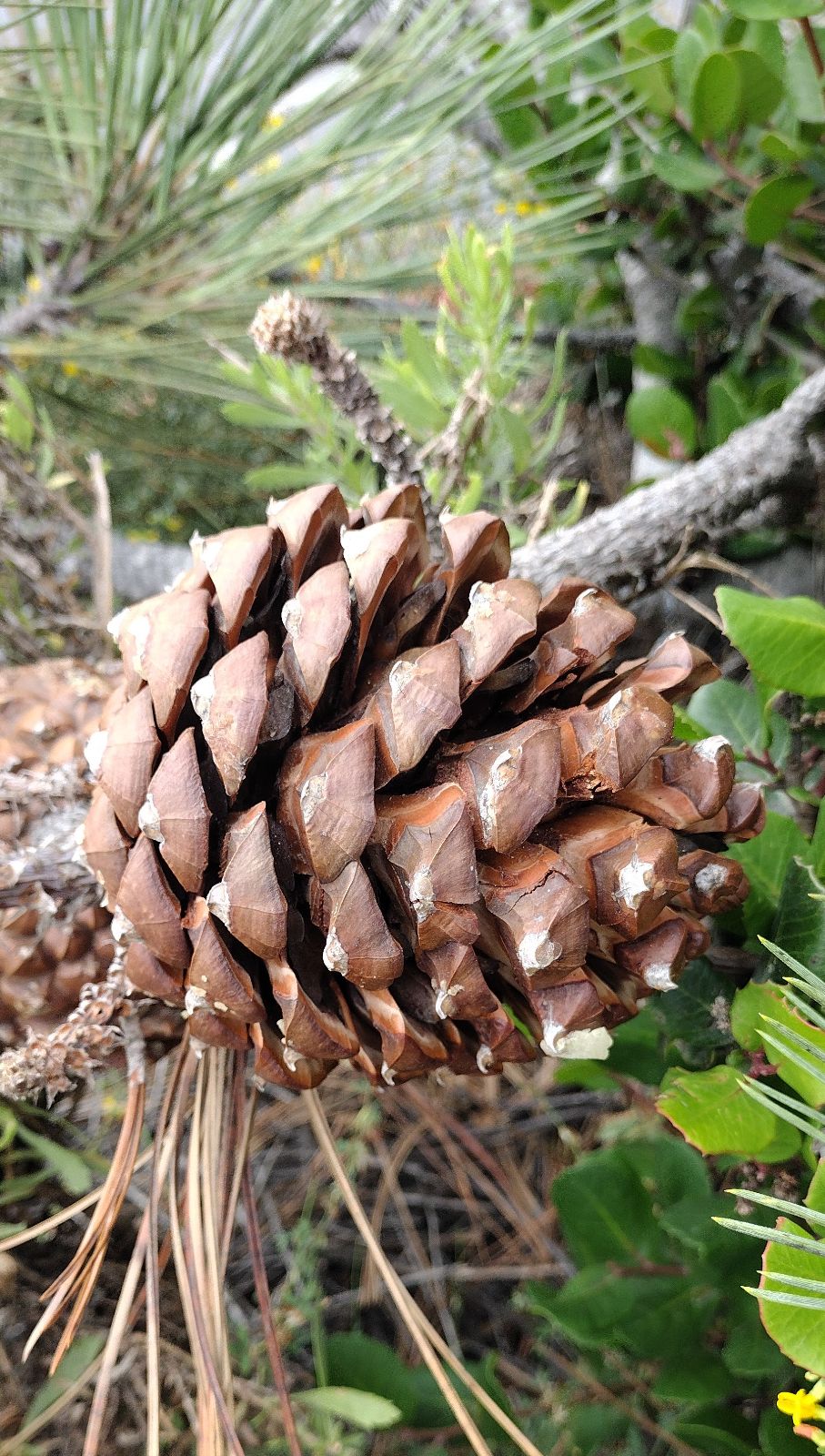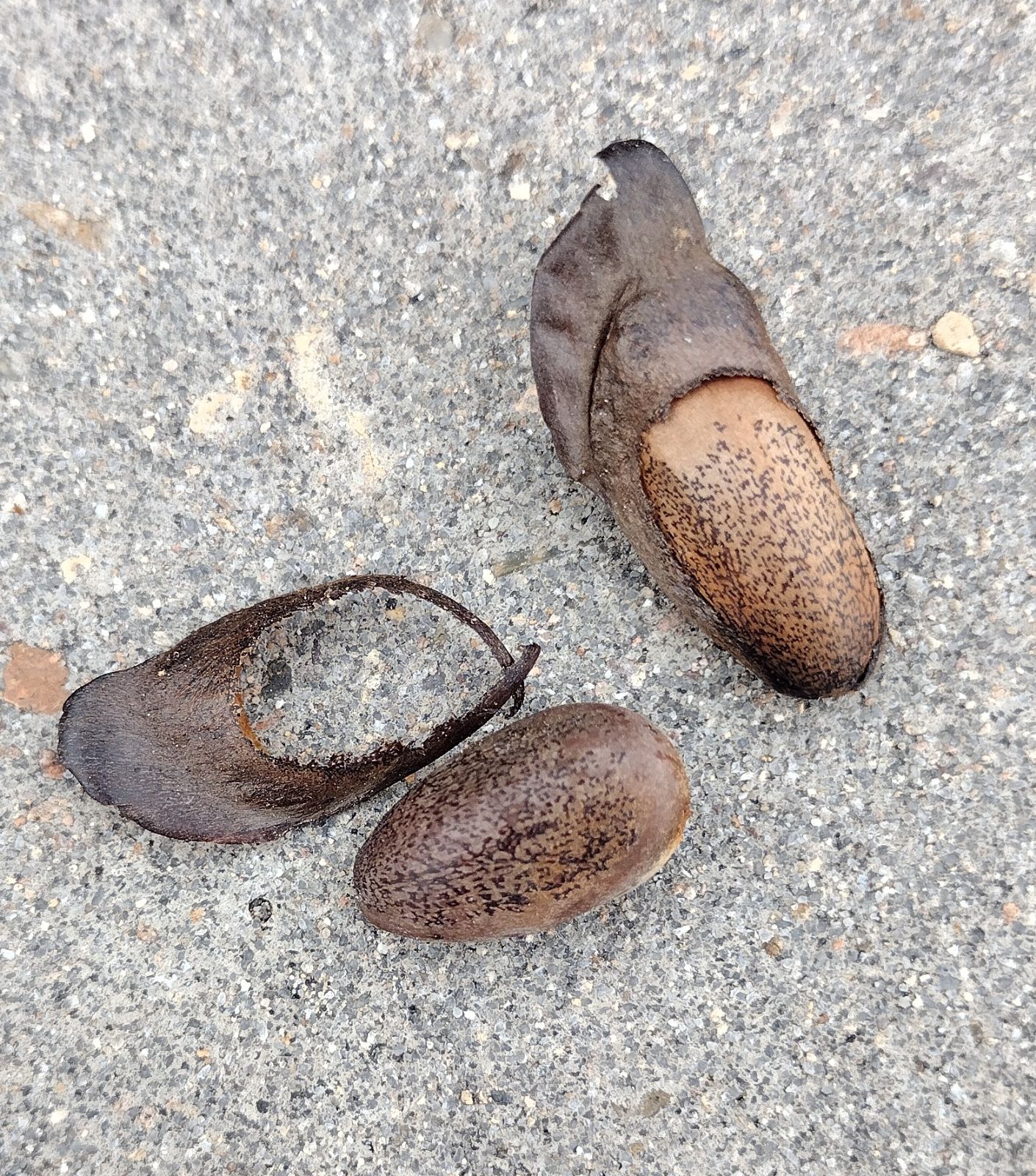Pinus torreyana
Credits
Article from New Trees by John Grimshaw & Ross Bayton
Recommended citation
'Pinus torreyana' from the website Trees and Shrubs Online (treesandshrubsonline.
Genus
- Pinus
- Subgen. Pinus, Sect. Trifolius
Common Names
- Torrey Pine
- Del Mar Pine
- Soledad Pine
Other taxa in genus
- Pinus albicaulis
- Pinus arizonica
- Pinus armandii
- Pinus attenuata
- Pinus ayacahuite
- Pinus balfouriana
- Pinus banksiana
- Pinus bhutanica
- Pinus brutia
- Pinus bungeana
- Pinus canariensis
- Pinus cembra
- Pinus cembroides
- Pinus chiapensis
- Pinus contorta
- Pinus coulteri
- Pinus culminicola
- Pinus densata
- Pinus densiflora
- Pinus devoniana
- Pinus durangensis
- Pinus echinata
- Pinus edulis
- Pinus elliottii
- Pinus engelmannii
- Pinus eremitana
- Pinus flexilis
- Pinus gerardiana
- Pinus greggii
- Pinus × hakkodensis
- Pinus halepensis
- Pinus hartwegii
- Pinus heldreichii
- Pinus henryi
- Pinus × holfordiana
- Pinus hwangshanensis
- Pinus jeffreyi
- Pinus johannis
- Pinus koraiensis
- Pinus lambertiana
- Pinus leiophylla
- Pinus longaeva
- Pinus massoniana
- Pinus maximartinezii
- Pinus monophylla
- Pinus montezumae
- Pinus monticola
- Pinus morrisonicola
- Pinus mugo
- Pinus muricata
- Pinus nelsonii
- Pinus nigra
- Pinus oocarpa
- Pinus orizabensis
- Pinus palustris
- Pinus parviflora
- Pinus patula
- Pinus peuce
- Pinus pinaster
- Pinus pinceana
- Pinus pinea
- Pinus ponderosa
- Pinus pseudostrobus
- Pinus pumila
- Pinus pungens
- Pinus quadrifolia
- Pinus radiata
- Pinus remota
- Pinus resinosa
- Pinus rigida
- Pinus roxburghii
- Pinus sabiniana
- Pinus serotina
- Pinus sibirica
- Pinus strobiformis
- Pinus strobus
- Pinus sylvestris
- Pinus tabuliformis
- Pinus taeda
- Pinus taiwanensis
- Pinus teocote
- Pinus thunbergii
- Pinus virginiana
- Pinus wallichiana
- Pinus wangii
- Pinus yunnanensis
Tree to 10(–23) m, though reaching 33 m or more in cultivation, trunk gnarled and irregular, 1 m dbh. Bark smooth, dull grey; in older trees thick, scaly, dark reddish brown, weathering to grey, breaking into small plates divided by longitudinal fissures. Crown usually sparse and open. Branchlets glaucous, light green, though turning purplish brown; vegetative buds resinous. Leaves in fascicles of (four to) five, fascicles massive, persisting for two to three (to four) years, in large, terminal tufts, yellowish green to blue-green and glaucous, triangular in cross-section, 18–30 × 0.19–0.25 cm, margins serrate, apex acute. Fascicle sheaths huge, to 5 cm long, though weathering to 1–2 cm long. Cataphylls brown, deciduous. Male strobili 3.5–6 cm long. Female cones subterminal, solitary; peduncles stout, 2–4 cm long. Cones 9–16 × 10–13.5 cm, purplish brown through green to reddish brown, taking two and a half years to mature; mature cones ovoid-conical, symmetrical. Scales thick, woody, oblong, opening to release the seeds; apophysis pyramidal; umbo dorsal, 0.4–0.6 cm long, yellowish brown, with a broad spine. Seeds the second largest to be found in all pine species (after P. maximartinezii), 1.7–2.4 × 0.9–1.2 cm, ovoid, flattened, light to dark brown; wings ineffective, short and thick, 0.7–1 cm long, dark brown to black. Thieret 1993, Farjon 2005a. Distribution USA: California (Pacific coast north of San Diego). The single population extends 6 km along the coast and 1.6 km inland, and is divided by the Soledad River. Habitat Coastal slopes and ravines between 30 and 125 m asl. USDA Hardiness Zone 9. Conservation status Vulnerable. Most of the mainland population of P. torreyana is protected within the Torrey Pines State Reserve (Haller 1986). Illustration Farjon 2005a; NT583, NT626. Cross-reference K246.
Pinus torreyana, like P. radiata and Cupressus macrocarpa on the Monterey Peninsula, is another Californian conifer marooned on a cliff top by changing climatic circumstances. Like theirs, too, is its transformation from very unprepossessing, stunted little trees in the wild to magnificent specimens in cultivation. As seen in the Torrey Pines State Reserve on the coast north of San Diego, it is gnarled and dusty-looking, an appropriate companion to the yuccas and other xerophytic plants with which it grows. Away from there it can become huge, potentially developing a thick trunk and heavy limbs that support a rounded canopy, as in the San Francisco Botanical Garden. The largest recorded tree was 45 m tall (1.5 m dbh) at New Plymouth, New Zealand in 1982, and there are specimens of over 30 m throughout western California (Jacobson 1996). In North America it is considered to be frost- sensitive, but Arthur Lee Jacobson (2006) has recorded a tree of 10 m in Seattle. Jacobson gives the credit of its introduction to Britain to William Lobb in 1860. The traditional view, expressed in the ‘old’ RHS Dictionary of Gardening (Chittenden 1951), was that it was ‘Too tender for general cultivation in the British Isles’, but in the light of changing climate patterns this statement is perhaps less true today. The champion tree, standing 22 m tall (53 cm dbh) in 2000 (TROI), enjoys the comparatively benign conditions of Powerscourt, Co. Wicklow, but there is a tree at the Sir Harold Hillier Gardens, planted prior to 1976, that is catching up with it rapidly, having reached 21 m (38 cm dbh) by 2007 (Sir Harold Hillier Gardens database). This suggests that, under current climatic circumstances, it could be planted much more widely in southern England and along the French coast.
Growing in only a couple of groves on Santa Rosa Island in Santa Barbara Co., California is the island isolate known as P. torreyana subsp. insularis J.R. Haller. This differs in small details from subsp. torreyana, principally in having a broader, denser crown with bluish green leaves, cones that are broader (>13.5 cm) than long, and smaller, darker seeds (mean >1.1 cm wide). The endangered status and apparent isolation of this taxon have afforded it more interest than it perhaps deserves, as there are minimal genetic differences between the two populations (Waters & Schaal 1991). C.J. Earle considers that it is best to regard it at the varietal rank, as var. insularis (J.R. Haller) Silba (Gymnosperm Database 2008). Accessions of known origin should be maintained as such, especially as the Santa Rosa population is tiny and highly endangered, but the majority of cultivated specimens of P. torreyana are of unknown origin.

